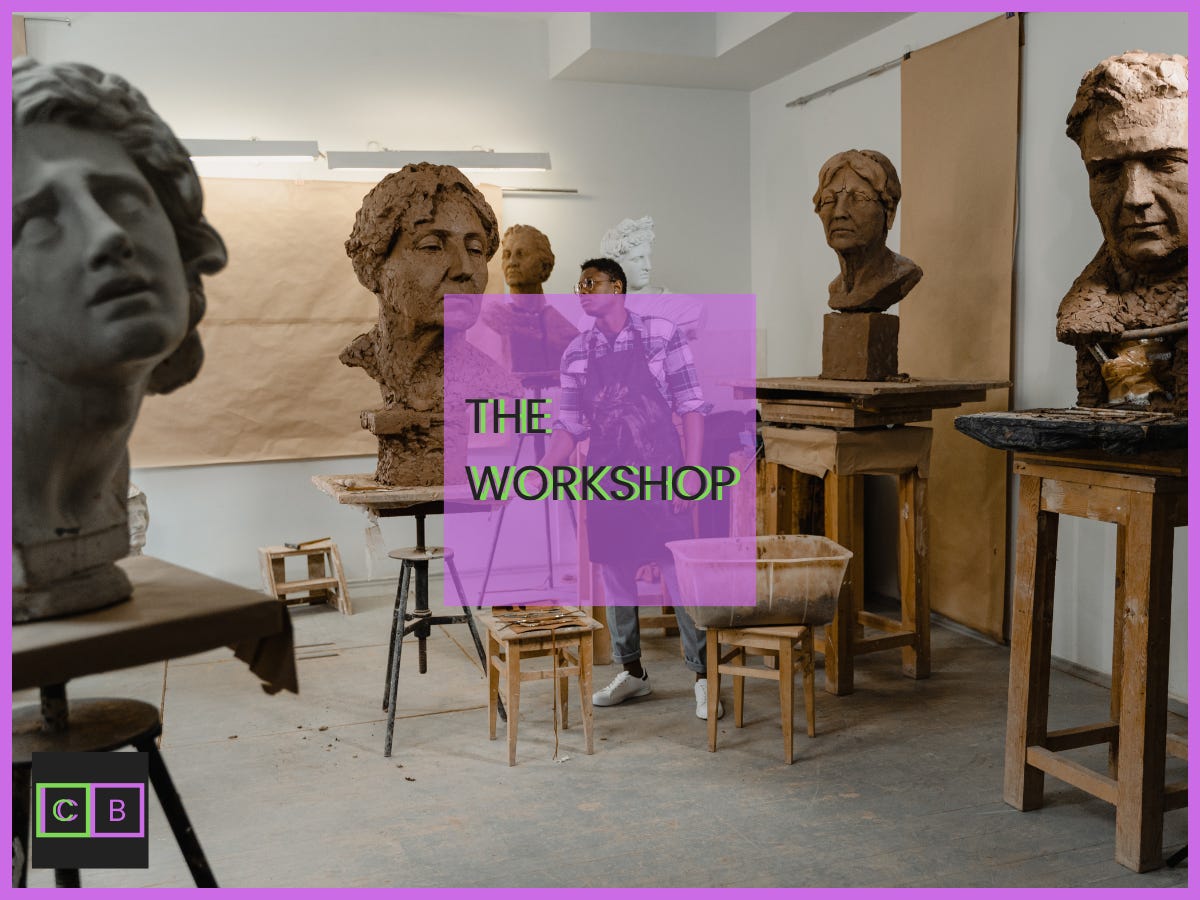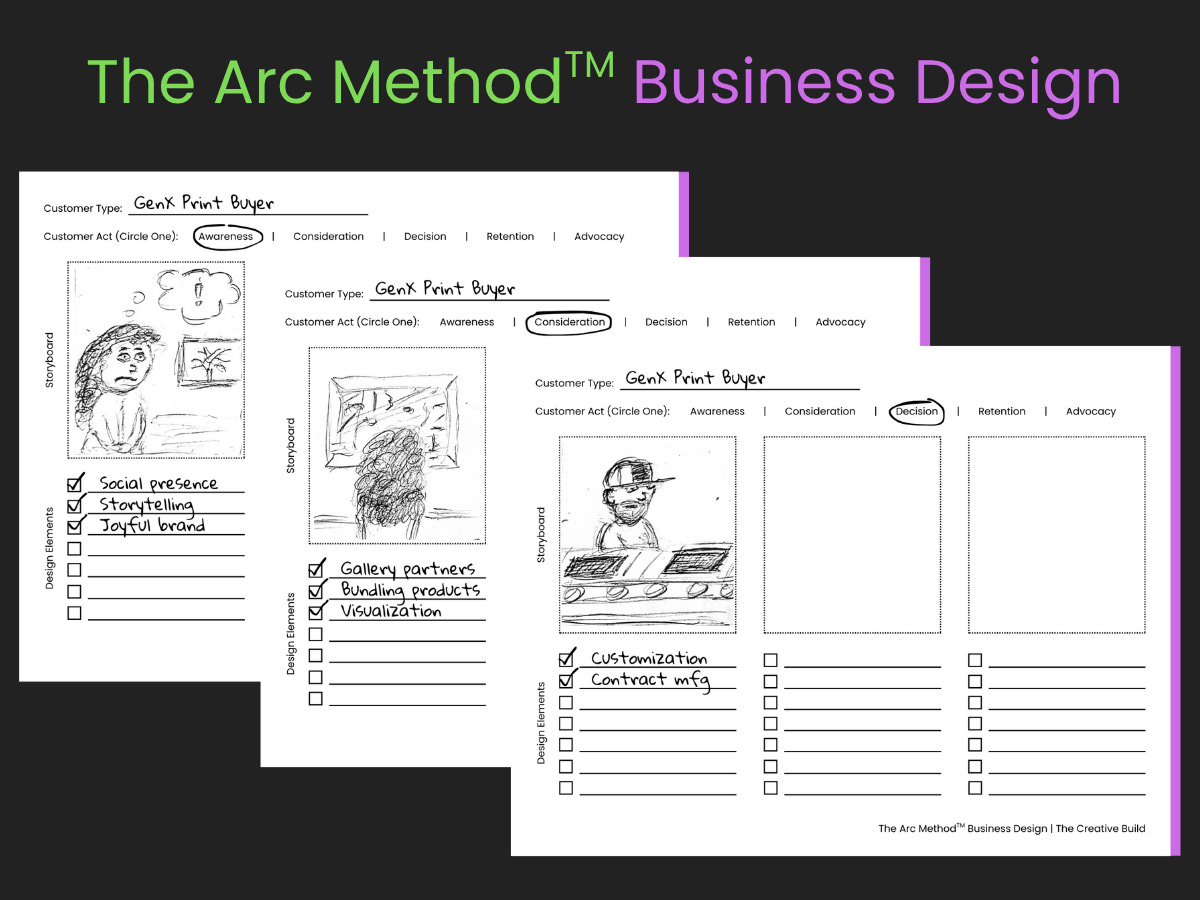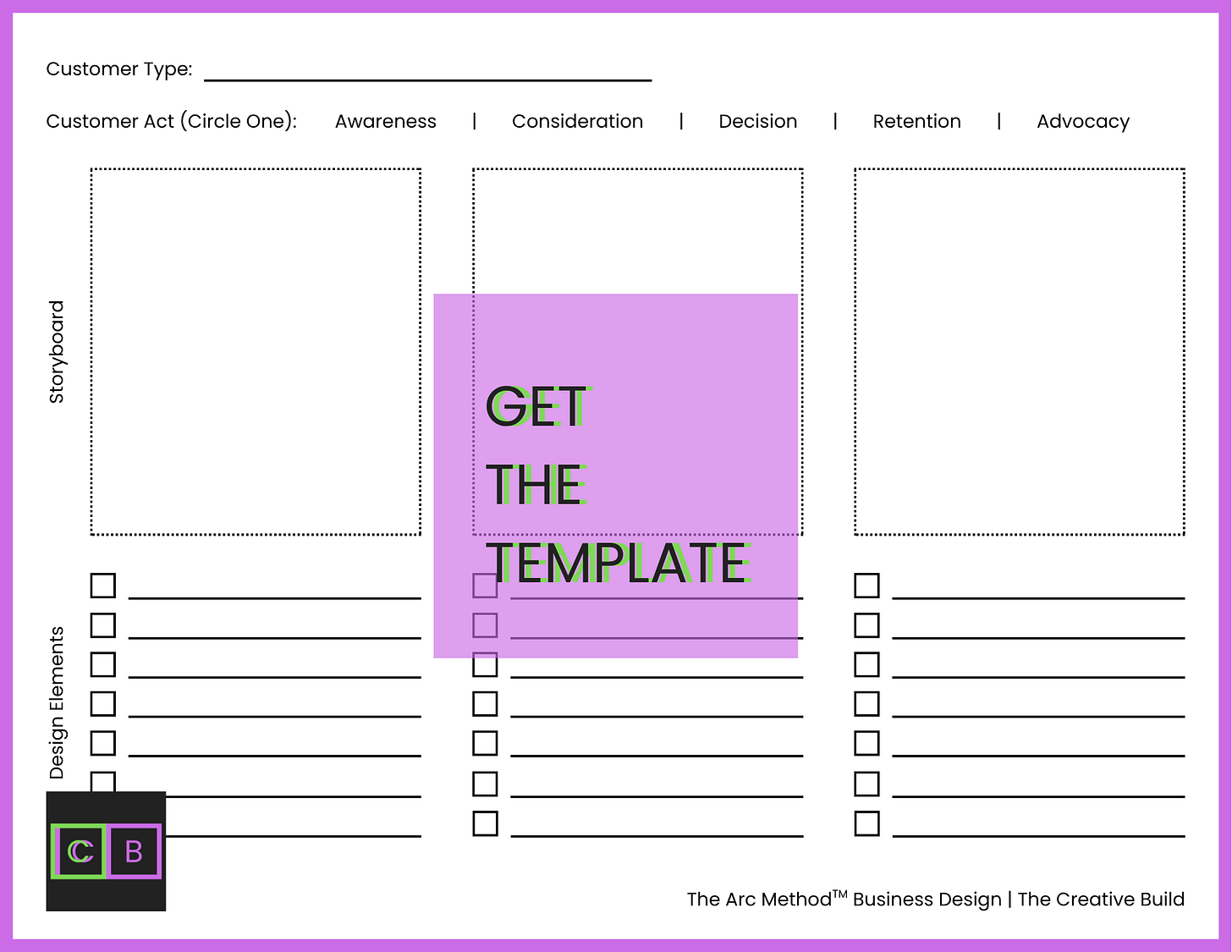Design Your Business Around Customer Story
Introducing The Arc Method™ business design for creatives
Welcome to The Workshop–a weekly series where I show creatives tools and methods to build businesses that serve real human stories. Starting with your own.
This post is free to help you get started, but most issues of The Workshop are for paid subscribers only. The Weekly Build, our weekly advice series for creative entrepreneurs, is always free. You can receive both in your inbox here:
Most business tools weren’t made for creative entrepreneurs. They’re rigid, lifeless, and built for corporate enterprises, not creative endeavors.
That’s a problem.
Because businesses, like great art, have to connect with people.
But most business tools forget that.
They strip the soul out of entrepreneurship and creatives feel it first.
The Need for Creative Business Design
We build creative businesses here at The Creative Build. But before you can build anything, you have to design it. In the business world, this means making choices like what types of customers you’ll serve, what you’ll sell, how it gets to customers, and what parts of your business will be run by partners instead of you.
Traditional business tools treat business like a machine, a set of parts to be optimized. They were developed for manufacturing companies during our industrial era. That approach misses the heartbeat of a creative business—the relationship between you and your customer. And it risks making choices that don’t serve you or your customers just because that’s the way businesses have always been built.
Instead, let’s build your business right from the start. Creative businesses thrive on human connection and story. So tools used to design and build them should treat human connection as foundational, not an afterthought.
What if we stopped mapping value propositions, channels, and partnerships first?
And started with your customer’s story?
Introducing The Arc Method™
The Arc Method™ is a business design tool built for creative businesses. Instead of diagramming what you want to sell, you start with what they are living through. You don’t sell stuff, you earn a role in their story.
The Arc Method™ designs your business around your customer’s story. Your goal is to be invited into their story as a long-term supporting character–and to be compensated for your role–because you improve the arc of their story in some way. Any choices you make about your business that are not tied to those goals should be avoided or scrapped.
The Arc Method™ uses storyboarding to visualize your customer’s emotional journey across multiple acts.
As an entrepreneur building a business, you choose business design elements throughout their story to influence it. The choices you make link to individual moments in your customer’s story.
Here’s how it works.
Customer Story Acts
The Arc Method™ borrows common stages of a sales funnel from marketing and sales: awareness, consideration, decision, retention, and advocacy. But instead of using these as goals to be achieved with marketing and sales tactics, they’re acts that describe movement in your customer’s story.
The storyboard describes what that movement looks like from their perspective. Some acts may have only one scene, some may have more. That’s okay. You’re not filming a movie, you’re building deep understanding of your customer. Start with the biggest emotional moment in each act. That’s often enough.
Let’s see what might happen in each act you’re an artist selling prints of your work:
Awareness: Customers are becoming aware of a need that might be fulfilled by your work but they haven’t decided yet if they’ll do anything about it. Maybe they need to feel uplifted from a difficult moment in their life. Business design choices like storytelling-focused marketing, your social media presence, or your brand voice might get them to take action.
Consideration: Customers are considering what to do about the need they feel. They could buy artwork but they could also do something else like take a vacation or visit a spa. Business design choices like partnerships with galleries, promotional bundles, and digital visualization tools on your website could move their story arc toward an art purchase.
Decision: Customers are deciding what to buy. They’ve decided to buy art but haven’t decided who to buy from. But they want it to feel personal and they want it fast. So your business offers customization for your work, fast-turnaround, and local contract printing with next day delivery.
You get the point. The retention act, where you influence customers to stay customers, and the advocacy act, where you influence them to recommend you to friends, work the same way. Each business design choice is tied to a moment and a need for customers, bending their story arc toward a more positive outcome for them. By bending it toward you as a supporting character.
This Week
It doesn’t make sense to start making choices about what your business looks like until you can sketch out your customer’s story and understand how you want to influence it. So that’s where your business design–and eventually your build–should start.
In the next issue of The Workshop, I’ll show you how to start sketching out your customer’s journey. For now, think about what kind of customer you’d want to sketch. Are there behaviors, likes and dislikes, or common stories that you might imagine your customers experiencing?
Build hypotheses about your customers and take notes. Don’t worry about getting it right just yet. If you need inspiration, look to your own work. Ask yourself: What kind of transformation does my best work spark?
And download a free, printable template of The Arc Method™ by clicking the image below.
Next week we’ll use it to start sketching your customer’s story together.
Have thoughts, questions, or an “aha” moment?
Reply to this email or leave a comment. I read every message and love hearing how your creative business is unfolding. Your insight might even shape a future edition of The Workshop.
New to The Creative Build?
I publish two posts a week to help creatives turn their talent into thriving, independent businesses:
The Weekly Build (Fridays): Advice, mindset, confidence
The Workshop (Mondays): Tools and frameworks you can put to work
Subscribe to follow along. You’re not building alone.




